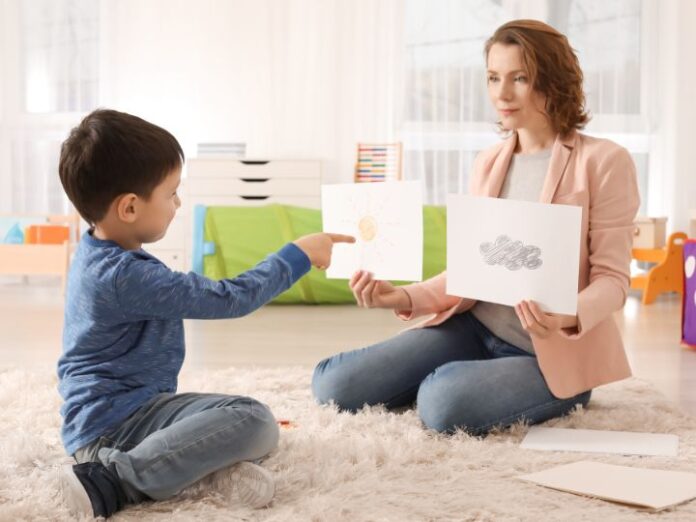If you’ve ever wondered why your child suddenly melts down in a noisy shopping centre, refuses to wear certain clothes, or becomes distressed during everyday activities, sensory processing could be playing a big role. Many parents begin their journey toward answers with a simple online search: OT for kids. What they discover is that occupational therapy (OT) can be a game-changer when it comes to understanding and managing sensory-related behaviours.
Occupational therapy helps children who struggle with interpreting and responding to the sensory world around them. From touch, sound and movement to taste and visual stimuli, sensory input can strongly influence a child’s emotions, attention, and actions.
What Are Sensory Processing Issues?
Sensory processing issues occur when the brain has trouble receiving and responding to information from the senses. For some kids, sounds may feel too loud, lights too bright, or certain fabrics unbearable. Others may crave sensory input—constantly moving, touching everything, or seeking rough play.
These reactions aren’t just preferences—they’re neurological responses. When the sensory system becomes overwhelmed or understimulated, it can trigger behavioural outbursts, avoidance, or withdrawal.
That’s where occupational therapy for kids makes a difference. Occupational therapists are trained to identify sensory triggers and help children better manage their responses, improving both behaviour and overall well-being.
How Sensory Issues Affect Behaviour
Sensory challenges can show up in a wide range of behaviours. A child who avoids noisy places may be labelled as shy or stubborn. One who constantly seeks movement might be mistaken for hyperactive. And a child who screams when their shirt feels “wrong” could be misunderstood as defiant.
These behaviours often stem from discomfort or confusion caused by sensory overload. The child isn’t being “difficult”—they’re trying to cope with a world that feels too intense or unpredictable.
Understanding this connection is the first step to more compassionate and effective support. OT support for kids focuses on teaching self-regulation strategies and creating environments that reduce sensory stress.
The Role of Occupational Therapy in Sensory Regulation
Sensory integration is a key part of occupational therapy. This approach helps children process and respond to sensory input in a more organized and adaptive way. Through structured, play-based activities, therapists expose children to sensory experiences in a safe and controlled setting, helping them gradually build tolerance and develop coping skills.
For example, a child sensitive to touch might engage in tactile play using different textures, while one who avoids movement may be guided through gentle swings or balance activities. These targeted experiences help “rewire” the brain’s response over time.
Families who turn to ot for kids often report fewer meltdowns and improved attention, sleep, communication, and emotional regulation.
Tailored Strategies That Make a Difference
No two children are the same—and occupational therapists know that. That’s why therapy plans are completely personalised. A therapist will find what works best if your child needs a calm-down space, a sensory diet (a planned schedule of sensory activities), or tools like noise-cancelling headphones.
OTs may also help parents and teachers adjust the environment by reducing visual clutter, dimming lighting, or breaking tasks into smaller steps. These changes can make school, home, and public spaces more manageable for sensory-sensitive children.
Occupational therapy for kids as an early intervention is particularly effective. The earlier these supports are in place, the more positive the long-term outcomes—emotionally, socially, and academically.
Strengthening Emotional and Social Skills
Children with sensory processing difficulties often struggle with emotional outbursts, frustration, or anxiety. These emotional responses can limit their social interactions, friendships, and classroom participation.
OT helps by teaching children to identify their feelings, understand what causes them, and use calming strategies before reaching a crisis point. This emotional literacy boosts their confidence and reduces the chance of isolation or behavioural referrals.
Socially, therapists might work on turn-taking, personal space, and recognising non-verbal cues—all essential skills for successful peer interactions. OT services for kids don’t just improve sensory processing—they support the whole child.
Empowering Parents and Educators
One of occupational therapy’s most powerful aspects is that it equips parents and teachers with the knowledge and tools they need. Therapists often provide guidance on handling sensory-based behaviours in everyday settings, offering practical tips that make a real difference.
By learning the “why” behind the behaviour, adults become more empathetic and effective in their support. This creates consistency between home, school, and therapy—maximising the benefits for the child.
Searching for expert OT for kids can be the beginning of a more peaceful home life, stronger relationships, and greater success in school environments.
Final Thought
Sensory issues don’t have to rule your child’s life or household. Understanding is the key to change when behaviour challenges are linked to how a child processes the world around them. OT for kids offers personalised, hands-on support that empowers children to better navigate their environments, regulate their emotions, and build skills for daily life. With the right guidance, kids don’t just cope—they thrive. Learn More!































